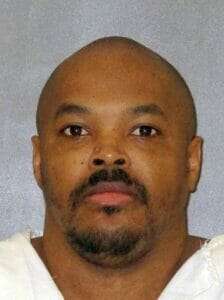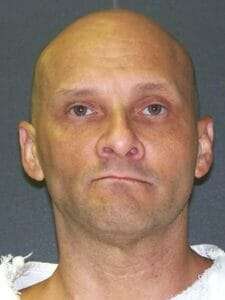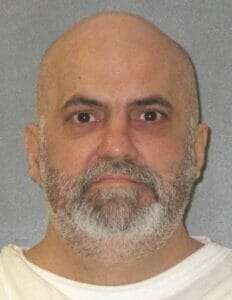
Terry Edwards was executed by the State of Texas for a murder committed during a robbery. According to court documents Terry Edwards would shoot and kill Mickell Goodwin, 26, and Tommy Walker, 34 during a robbery of a Subway restaurant. Terry Edwards would be executed by lethal injection on January 26, 2017.
Terry Edwards More News
Attorneys for Texas death row inmate Terry Edwards are asking the U.S. Supreme Court to stop his scheduled execution Thursday for a fatal robbery more than 14 years ago at a Dallas-area Subway sandwich shop.
Evidence showed Edwards worked at the restaurant but was fired a few weeks earlier for stealing from the cash register. An employee and the store manager were killed in the $3,000 holdup in Balch Springs, about 15 miles southeast of downtown Dallas.
Edwards, 43, would be the second prisoner executed this year in Texas, the third nationally.
Edwards’ lawyers contended Dallas County prosecutors at his trial incorrectly portrayed Edwards as the shooter and that he was innocent of the shootings. They also said that the trial of Edwards, who is black, improperly excluded black people from the jury. And they accused prosecutors of manipulating evidence and testimony.
Finally, they said Edwards received deficient legal help at both his trial and in earlier appeals.
The execution should be stopped and the case reopened for a “full and fair” hearing, attorney Carl Medders told the 5th U.S. Circuit Court of Appeals.
The court rejected that appeal late Wednesday, saying the facts did not support Edwards’ arguments, that Edwards’ previous attorney “missed no deadlines and filed substantive arguments.”
John Mills, another lawyer on Edwards’ legal team, said attorneys would take their case to the Supreme Court.
State attorneys argued Edwards’ appeals improperly raised new claims, were too late under filing deadlines and had insufficient evidence to support their claims.
“Edwards could not hire experts to overcome the fact that he was found with the murder weapon and the money from the robbery,” Ellen Stewart-Klein, an assistant Texas Attorney General, said in a court brief. “Expert testimony could not have changed the evidence that the victims were shot from point-blank range. And expert testimony could not undo the statements Edwards made confessing upon arrest.”
An audio recording in the police car caught Edwards saying he had messed up “big time,” and talking about two murders.
In a separate appeal, other lawyers asked the Supreme Court to halt Edwards’ punishment until the court resolves an appeal that seeks to require Texas prison officials test the pentobarbital they use for lethal injections to ensure its potency and sterility. Edwards is among several Texas death row inmates who argue the testing is needed to make certain the drug made by an unidentified compounding pharmacy doesn’t cause unconstitutional pain and suffering.
Edwards admitted being in the Subway store shortly after it opened July 8, 2002, but told police a man he knew as “T-Bone” gave him the gun and did the shootings. Investigators later determined the other man he claimed to not know by name was his cousin.
Edwards was on parole at the time of the shootings. He’d been released in October 1999 after prison time for car theft and possession with intent to deliver cocaine.
Mickell Goodwin, 26, and Tommy Walker, 34, were each shot in the head in the holdup. Walker, the store manager, had seven children and stepchildren. Goodwin was mother of two daughters.
The second man involved, Edwards’ cousin, Kirk Edwards, turned himself in to police a day after the shootings. He had a previous criminal record for burglary and theft and now is serving 25 years for aggravated robbery for the sandwich shop case.








